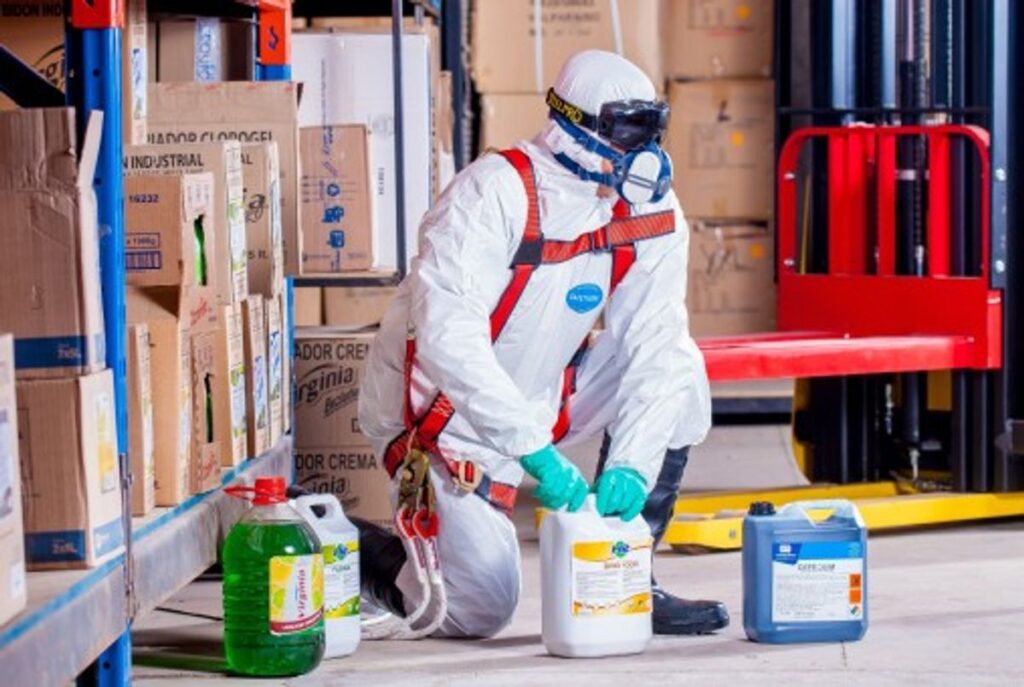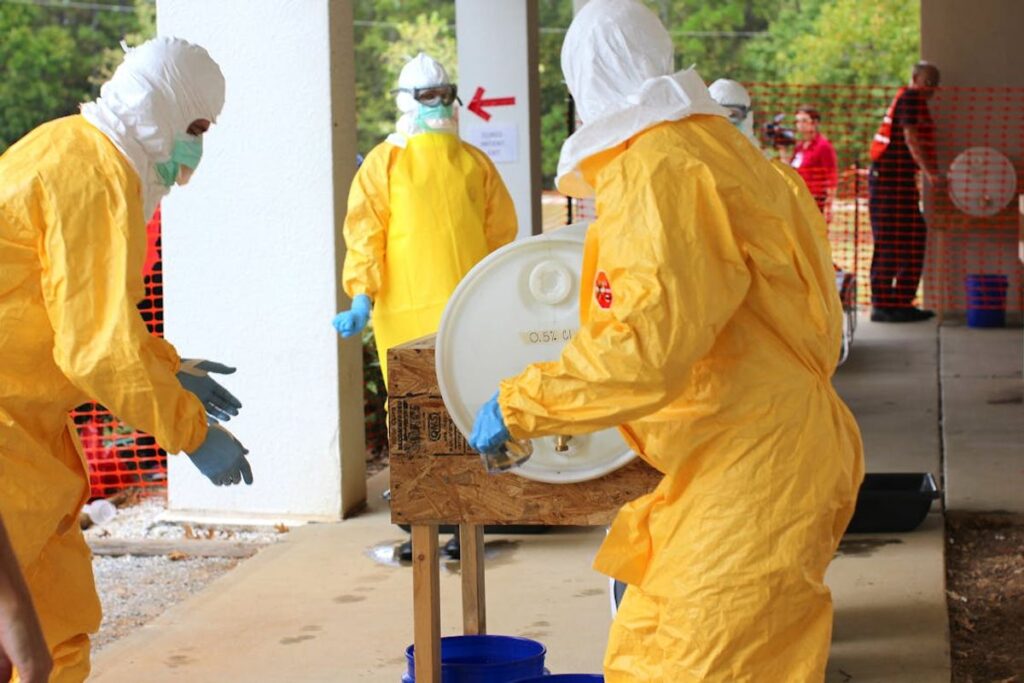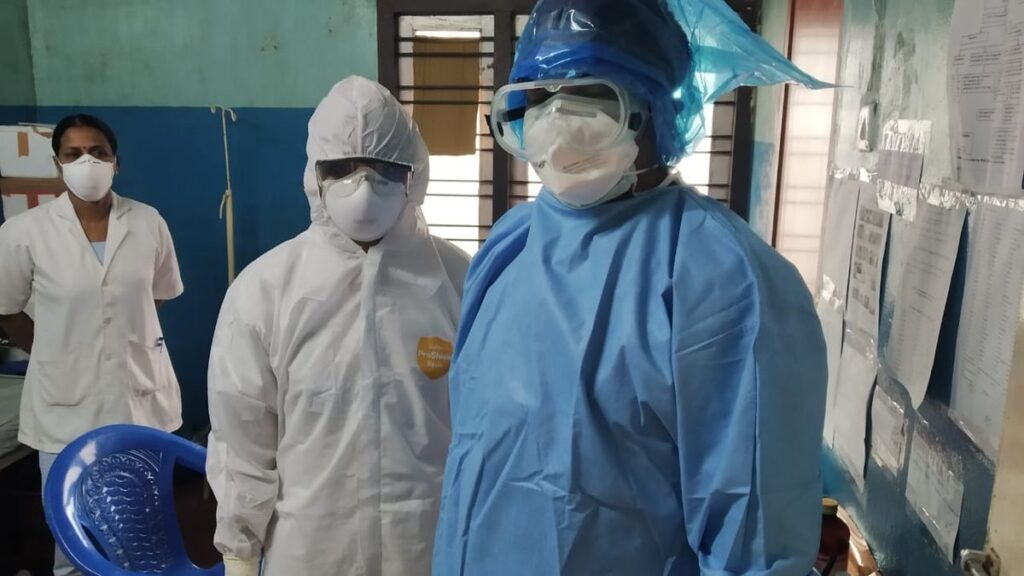As healthcare providers, navigating prescription Personal Protective Equipment (PPE) compliance is crucial to ensure the safety of both patients and staff. This article provides essential tips for understanding PPE requirements, selecting appropriate gear, training staff, monitoring usage, and addressing challenges in the healthcare environment. By adhering to these guidelines, healthcare providers can maintain a high standard of care while complying with legal and safety obligations.
Key Takeaways
- Comprehend the basics of PPE in healthcare, including legal requirements, to establish a compliant PPE program.
- Evaluate PPE quality and effectiveness, source reliable suppliers, and customize PPE to specific needs for optimal protection.
- Implement comprehensive training programs to ensure consistent PPE usage, maintenance, and staff compliance.
- Monitor PPE inventory and usage rates, address non-compliance issues, and continuously improve PPE protocols.
- Effectively manage PPE shortages, navigate financial constraints, and foster a culture of safety and compliance within the healthcare setting.
Understanding Prescription PPE Compliance

The Basics of PPE in Healthcare
Personal Protective Equipment (PPE) is a critical component in safeguarding healthcare workers from exposure to infections, chemicals, and other potential hazards. Proper use of PPE is not only a regulatory requirement but also a fundamental practice to ensure the safety and well-being of both staff and patients.
When considering PPE, it’s essential to recognize the various types that may be required in different healthcare settings. These range from gloves and masks to more specialized items like prescription PPE eyeglasses. Prescription PPE eyeglasses for healthcare professionals ensure compliance with safety regulations, offer enhanced protection, and blend style with functionality, enhancing credibility and professionalism in healthcare settings.
It is imperative for healthcare providers to be well-versed in the types of PPE necessary for their specific roles and the situations they may encounter. This knowledge is the cornerstone of a robust safety culture within a healthcare facility.
Understanding the correct application and limitations of each PPE type is crucial. Healthcare providers must be trained to select the appropriate PPE for various procedures and to use it correctly to maximize protection.
Legal Requirements and Standards
Compliance with legal requirements and standards for Prescription Personal Protective Equipment (PPE) is not just a matter of following rules; it’s about ensuring the safety and well-being of both healthcare providers and patients. Healthcare facilities must adhere to a complex web of regulations that govern the use, availability, and quality of PPE. These regulations are enforced by various agencies, including the Occupational Safety and Health Administration (OSHA), the Food and Drug Administration (FDA), and the Centers for Disease Control and Prevention (CDC).
Key standards and guidelines include OSHA’s Bloodborne Pathogens Standard, which mandates the use of PPE to protect workers from the risk of exposure to infectious materials. The FDA oversees the approval of PPE, ensuring that the equipment meets specific performance criteria before it can be marketed. Additionally, the CDC provides comprehensive guidelines on the appropriate selection and use of PPE in healthcare settings to prevent Healthcare-Associated Infections.
It is crucial for healthcare providers to stay informed about the latest updates in PPE regulations and to implement these standards diligently within their practices. Regular audits and assessments can help in maintaining compliance and safeguarding against potential legal and health risks.
Healthcare providers should also be aware of the specific needs of their staff, especially those who may have medical conditions or are taking medications that could affect their use of PPE. Tailoring PPE programs to accommodate these needs is essential for ensuring that all staff members are adequately protected.
Implementing a PPE Program in Your Practice
Implementing a comprehensive PPE program within a healthcare practice is a critical step in ensuring the safety of both staff and patients. A successful PPE program hinges on thorough planning and execution. It should start with a hazard assessment to identify the types of PPE required for different tasks and areas within the practice. Following this, a clear policy outlining the use and maintenance of PPE should be established, informed by OSHA standards and best practices.
- Conduct a hazard assessment
- Develop a PPE policy
- Train employees on proper PPE use
- Establish maintenance and replacement schedules
It is essential to regularly review and update the PPE program to adapt to new challenges and ensure ongoing compliance.
Regular training sessions are crucial to reinforce the correct usage of PPE and to keep staff updated on any changes to the program. Additionally, maintaining an inventory of PPE and establishing a system for monitoring usage rates will help in managing supplies effectively. Optigrid’s insights into PPE eyewear compliance can be particularly valuable in this regard, emphasizing the importance of proper employee training and equipment maintenance.
Selecting the Right Prescription PPE

Assessing PPE Quality and Effectiveness
Ensuring that Personal Protective Equipment (PPE) meets the necessary quality and effectiveness standards is crucial for the safety of healthcare providers. Healthcare facilities must rigorously assess PPE to confirm that it adheres to established guidelines and provides adequate protection.
When evaluating PPE, consider the following points:
- Certification and standards compliance
- Material quality and durability
- Fit and comfort for extended use
- Performance under various clinical scenarios
It is essential to establish a systematic approach to PPE assessment that includes regular review and testing. This ensures that PPE continues to meet safety requirements and the needs of healthcare staff.
Additionally, healthcare providers should be aware of the procurement and maintenance policies for PPE, as outlined in resources like the ‘Personal Protective Equipment (PPE) Guidebook for PUIs and …’, which emphasizes the importance of following guidance on PPE usage.
Sourcing Reliable PPE Suppliers
When it comes to sourcing reliable PPE suppliers, healthcare providers must exercise due diligence to ensure that the products they procure meet the highest standards of quality and safety. Identifying suppliers with a strong track record of customer satisfaction and quality assurance is crucial in establishing a dependable supply chain for prescription PPE.
- Evaluate potential suppliers based on their certifications and compliance with safety standards.
- Seek out testimonials and real-life experiences from other healthcare providers.
- Consider the ease of procurement, whether through authorized retailers or online platforms.
It is essential to maintain a balance between cost-effectiveness and the quality of PPE to avoid compromising on safety.
By meticulously vetting suppliers and prioritizing those that align with your practice’s specific needs, you can create a robust PPE program that upholds the well-being of both staff and patients.
Customizing PPE to Meet Specific Needs
Customizing personal protective equipment (PPE) is crucial for ensuring that healthcare providers are adequately protected while also maintaining comfort and functionality. Assessing the specific needs of healthcare professionals is the first step towards tailoring PPE effectively. This involves considering the various roles within a healthcare setting and the unique risks they may encounter.
- Identify the roles and tasks in your healthcare setting
- Determine the specific risks associated with each role
- Select PPE that addresses those risks while ensuring comfort
Customized PPE not only enhances protection but also improves compliance, as healthcare workers are more likely to wear PPE that fits well and allows them to perform their duties without hindrance.
Once the needs are identified, it’s important to work with suppliers who can provide PPE that meets these tailored requirements. Regular feedback from staff can help refine PPE choices, ensuring that the equipment evolves alongside the changing demands of healthcare environments.
Training and Educating Healthcare Staff

Developing Comprehensive Training Programs
Developing comprehensive training programs for healthcare staff is crucial to ensure the safe and effective use of prescription PPE. Training should encompass not only the correct use of PPE but also the rationale behind its use, to foster a deeper understanding and commitment to compliance.
Effective training programs often include:
- An overview of PPE types and their specific uses
- Instructions on proper donning and doffing techniques
- Protocols for PPE disposal and decontamination
- Regular updates on evolving guidelines and best practices
It is essential to tailor training sessions to the roles and responsibilities of different staff members, ensuring that each individual is equipped with the knowledge and skills pertinent to their duties.
The integration of technology, such as CPOE (Computerized Physician Order Entry) systems and CDSS (Clinical Decision Support Systems), along with pharmacist involvement, can significantly enhance drug therapy safety. Similarly, ePrescribing systems are known to streamline pharmacy operations, reduce errors, and improve patient safety and cost efficiency.
Ensuring Consistent PPE Usage and Maintenance
To maintain a high standard of safety and hygiene within healthcare settings, ensuring consistent PPE usage and maintenance is crucial. This involves establishing clear protocols for the use, cleaning, and disposal of PPE, as well as regular checks to ensure these protocols are followed.
- Identify separate spaces: Designate distinct areas for donning and doffing to prevent potential cross-contamination.
- Clearly label each area: Use bold and clear signage to guide staff through the correct processes.
By fostering a culture of diligence and attention to detail, healthcare providers can significantly reduce the risk of infection transmission.
Regular training sessions should be conducted to reinforce the importance of PPE compliance. Additionally, a system for reporting and addressing non-compliance should be in place to continually improve PPE practices.
Evaluating Staff Competency and Compliance
Ensuring that healthcare staff are competent in the use of Prescription Personal Protective Equipment (PPE) and comply with the set protocols is crucial for patient and staff safety. Regular assessments and performance reviews are necessary to maintain high standards of PPE usage.
- Conduct skills assessments to gauge the proficiency of staff in donning and doffing PPE.
- Monitor adherence to PPE protocols during routine and emergency situations.
- Provide feedback and additional training to address any gaps in PPE practices.
It is essential to recognize and accommodate Understanding PPE Exceptions when standard PPE does not meet specific needs. Alternative PPE should undergo thorough Test and Evaluate processes to ensure safety and effectiveness.
By keeping a close eye on PPE practices and offering continuous education, healthcare providers can foster a culture of compliance and safety within their organizations.
Monitoring and Improving PPE Usage

Tracking PPE Inventory and Usage Rates
Effective management of Personal Protective Equipment (PPE) is crucial for maintaining a safe healthcare environment. Real-time tracking of PPE inventory ensures that healthcare providers have the necessary equipment when it’s needed most. By monitoring stock levels and usage rates, facilities can avoid shortages and overstocking, which can lead to unnecessary expenses.
To streamline the tracking process, consider the following steps:
- Conduct regular inventory audits to assess current stock levels.
- Implement a digital tracking system to monitor PPE usage patterns.
- Analyze data to predict future PPE needs and adjust procurement accordingly.
By proactively managing PPE inventory, healthcare providers can ensure that they are always prepared for both routine operations and unexpected surges in demand.
Maintaining an accurate and up-to-date inventory is not only about compliance but also about patient and staff safety. It is a continuous process that requires attention and refinement over time.
Identifying and Addressing Non-Compliance Issues
In the realm of healthcare, identifying and addressing non-compliance issues is crucial for maintaining a safe environment for both patients and staff. A proactive approach involves regular audits to ensure that safety policies and procedures are not only adhered to but also evolve with changing regulations and best practices.
To effectively manage non-compliance, it’s important to establish clear protocols for reporting and rectifying breaches. This can be structured as follows:
- Immediate reporting of non-compliance incidents
- Investigation to understand the root cause
- Corrective actions to prevent future occurrences
- Documentation of the incident and response
By fostering an atmosphere where staff feel comfortable reporting non-compliance, healthcare providers can swiftly address issues and maintain high standards of safety.
Regular training and updates are essential to keep all team members informed about their roles in compliance. It’s not just about having the right equipment; it’s about ensuring that every individual understands how to use it correctly and consistently.
Continuous Improvement of PPE Protocols
The journey towards excellence in PPE management is ongoing. Continuous improvement is essential to ensure that healthcare providers are always equipped with the best possible protection. This involves regular review and refinement of PPE protocols, taking into account the latest industry standards and technological advancements.
For instance, the integration of advancements in optical measurements, such as PD (Pupillary Distance) and SH (Segment Height), can significantly enhance the fit and vision correction provided by prescription eyewear and PPE. The use of tools like Optigrid simplifies these measurements, leading to better comfort and safety for healthcare professionals.
It is crucial to establish a feedback loop where staff can report on PPE usage and suggest improvements. This participatory approach not only empowers the staff but also uncovers practical insights for protocol enhancements.
To facilitate this process, consider the following steps:
- Conduct regular PPE protocol audits
- Analyze feedback and usage data
- Implement changes based on evidence and staff input
- Monitor the impact of changes and iterate accordingly
Addressing Challenges and Overcoming Obstacles
Managing PPE Shortages and Supply Chain Disruptions
Healthcare providers have faced significant challenges in managing PPE shortages and supply chain disruptions. The COVID-19 pandemic highlighted the critical need for robust strategies to ensure the availability of essential protective equipment. To mitigate these issues, healthcare facilities can adopt several proactive measures:
- Diversifying suppliers to reduce reliance on a single source.
- Establishing strategic stockpiles of critical PPE items.
- Implementing just-in-time inventory systems to optimize stock levels.
- Engaging in group purchasing organizations (GPOs) to leverage collective buying power.
By adopting a multifaceted approach, healthcare providers can enhance their resilience against future disruptions and maintain a steady supply of PPE.
Furthermore, lessons learned from recent crises can inform future procurement strategies. For instance, strategic purchasing and inventory management practices are essential to minimize the risk of shortages during public health emergencies. Healthcare organizations should continuously review and adjust their PPE policies to reflect the evolving landscape of supply and demand.
Navigating Financial Constraints
Healthcare providers often face the daunting task of balancing the need for high-quality prescription PPE with the realities of budget constraints. Cost-effective strategies are essential for maintaining compliance without compromising on safety. One approach is to prioritize expenditures by assessing the criticality of different PPE items, ensuring that funds are allocated where they are most needed.
- Evaluate and prioritize PPE needs based on risk assessment
- Seek bulk purchasing options for cost savings
- Explore alternative funding sources, such as grants or partnerships
By carefully managing resources and exploring creative financial solutions, healthcare providers can sustain their PPE programs effectively.
It’s also important to stay informed about the latest products and market trends, as this can lead to more informed purchasing decisions. Regularly reviewing and adjusting the PPE budget can help to identify areas where costs can be reduced without sacrificing quality or safety.
Fostering a Culture of Safety and Compliance
To promote a culture of healthcare compliance and responsibility, healthcare organizations must cultivate an environment where safety and compliance are ingrained in every aspect of operations. This involves creating a collaborative culture that encourages employees to work together to maintain high standards of patient care and regulatory adherence.
- Encourage open communication about safety and compliance issues.
- Recognize and reward compliance and safety achievements.
- Regularly review and update safety protocols.
- Engage staff in the development of safety procedures.
By embedding a culture of safety into the fabric of the organization, healthcare providers can ensure that compliance becomes a natural part of daily activities, rather than an afterthought.
Building trust with patients and among staff is also essential. Trust is fostered through transparency, consistent delivery of high-quality care, and exceptional service. When staff trust that the organization prioritizes their safety as well as that of the patients, they are more likely to adhere to PPE protocols and contribute to a culture of compliance.
In the journey to success, challenges and obstacles are inevitable, but they are not insurmountable. By addressing these hurdles head-on, we can transform them into stepping stones towards our goals. If you’re seeking strategies to overcome the barriers in your path, visit OPTIGRID for a wealth of resources and guidance. Together, we can navigate the complexities of your challenges and chart a course to victory. Don’t let obstacles deter you; let them be the reason you succeed. Take the first step now by signing in to OPTIGRID and unlock the potential for triumph.
Conclusion
In conclusion, navigating prescription PPE compliance is a critical task for healthcare providers aiming to ensure the safety and well-being of both patients and staff. By staying informed about the latest regulations, engaging in continuous education, and implementing robust management systems, providers can effectively meet compliance standards. Remember to consult with knowledgeable professionals when in doubt, and always prioritize the health outcomes of those in your care. As healthcare continues to evolve, so too will the requirements for prescription PPE, and being proactive in compliance efforts will position your practice for success in this ever-changing landscape.
Frequently Asked Questions
What is Prescription PPE Compliance and why is it important in healthcare?
Prescription PPE Compliance refers to adhering to legal and regulatory standards for personal protective equipment in healthcare settings. It ensures the safety of healthcare workers and patients by requiring PPE to be of a certain quality, fit, and suitability for medical tasks.
How can healthcare providers assess the quality and effectiveness of PPE?
Healthcare providers can assess PPE quality by verifying certifications, checking for compliance with standards like ASTM or NIOSH, and evaluating the materials and construction. Effectiveness can be assessed through fit tests and by considering the level of protection needed for specific tasks.
What are some reliable sources for procuring prescription PPE?
Reliable sources for prescription PPE include accredited manufacturers, authorized distributors, and government-approved vendors. Providers should verify the supplier’s credentials and track record for consistency and quality.
What strategies can be implemented to ensure consistent PPE usage and maintenance among healthcare staff?
Strategies include comprehensive training programs, regular reminders, and audits, providing easy access to PPE, establishing clear protocols for maintenance, and fostering a culture of safety and compliance.
How should healthcare facilities address PPE shortages and supply chain disruptions?
Facilities should develop contingency plans, diversify their supplier base, maintain a strategic reserve of PPE, and collaborate with local health systems and government agencies to mitigate the impact of shortages and disruptions.
What steps can healthcare providers take to foster a culture of safety and compliance with PPE protocols?
Providers can foster a culture of safety by leading by example, acknowledging and rewarding proper PPE use, encouraging open communication about safety concerns, and continuously educating staff about the importance of compliance.

I am a seasoned software engineer with over two decades of experience and a deep-rooted background in the optical industry, thanks to a family business. Driven by a passion for developing impactful software solutions, I pride myself on being a dedicated problem solver who strives to transform challenges into opportunities for innovation.
